Servers Designed for Single-Phase Immersion Cooling
Unlike air cooling, servers used in single-phase immersion cooling have some special considerations:
- Server installation mechanism
- Chemical phase changes
- Steady flow of coolant in the system
- Server maintenance and management methods
By partnering with the major single-phase immersion cooling suppliers in the market, GIGABYTE's single-phase immersion cooling servers can be installed directly in their off-the-shelf tanks from these partners, eliminating the need for product compatibility testing and customization. These systematic modifications greatly reduce the time for verification and adoption of single-phase immersion cooling technology.
Structural Integrity and Simplified Management
Servers must be installed vertically in the tank, and this lowering or raising of servers is due to an optimized tank design for single-phase immersion cooling. Therefore, the server installed upright needs to have rigid and firm structural integrity to ensure the chassis will not deform. Also, due to the vertical design, the cable routing and maintenance are also different than traditional data centers. Therefore, we re-examine the design and strengthen the server chassis for immersion cooling and reroute the cables. For instance, I/O ports are all arranged on the rear side facing up, and the network cables need to be rerouted to the sides so that maintenance can be quick and easy. Also, to make it more convenient for IT to install or remove a server, a bracket was added to allow hooks to move the server.

Design to Ensure Steady Fluid Flow in the Tank
When a server is submerged in a coolant, an important condition is that the fluid is circulated well, and the warm fluid is pumped out as cooler fluid is pumped in. Only by maintaining a stable coolant flow can the heat absorbed by the fluid be managed, and the system can automatically adjust the coolant flow rate according to the operation needs. To ensure efficient heat removal, the server design for single-phase immersion cooling not only must remove any components that negatively affect the fluid flow in the system, but they also must reduce the dead space in the chassis to avoid heat accumulation. Based on the viscosity of the coolant and the specific heat capacity of the coolant, the heat dissipation rate of the server must be constantly monitored and adjusted to avoid issues . Servers developed for single-phase immersion cooling can significantly reduce unnecessary barriers that users may encounter when adopting new technologies, allowing them to focus on productivity.
Made with Materials Suitable for Various Coolants
Single-phase immersion cooling submerges the server in a cooling fluid that removes heat by directly coming into contact with the heating elements. GIGABYTE had to evaluate how the chemical composition of the coolant may affect the components as well as the effect of the temperature and process on the coolant. Through theory and experimental experience, we perfected the design and will continue to explore materials that are suitable for immersion cooling.

H262-Z6B Product Overview


H262-Z6B Block Diagram

Architecture for Modern Data Centers

AMD EPYC™ 7003 Series Processors
GIGABYTE servers and AMD EPYC 7003 Series Processors deliver the highest possible I/O throughput to pave the way for fast communication between CPU and accelerator in HPC and data analytics.
- Up to 64 Cores
- 8 Channels of DDR4-3200
- Up to 4TB Memory Capacity
- 128 lanes PCIe 4.0
- 2-way SMT & Turbo Boost
- 4,6,8-channel Memory Interleave
- Synchronized Fabric and Memory Clock Speeds
- Secure Memory Encryption
- Secure Encrypted Virtualization
Power Efficiency
Cold Redundancy
To take advantage of the fact that a PSU will run at greater power efficiency with a higher load, GIGABYTE has introduced a power management feature called Cold Redundancy for servers with N+1 power supplies. When the total system load falls lower than 40%, the system will automatically place one PSU into standby mode, resulting in a 10% improvement in efficiency.
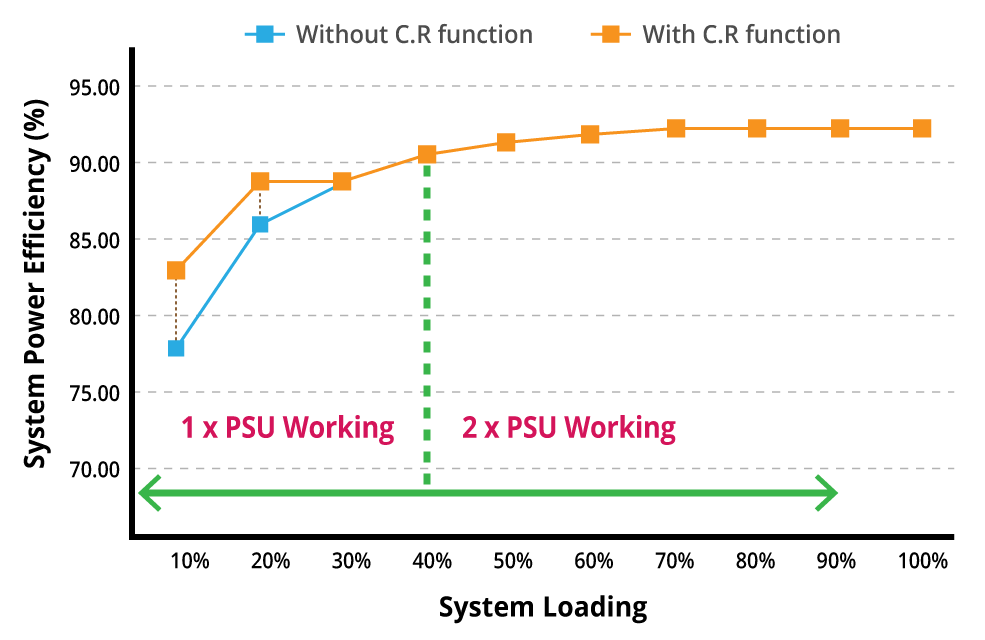
High Availability
Smart Ride Through (SmaRT)
To prevent server downtime and data loss as a result of loss of AC power, GIGABYTE implements SmaRT in all our server platforms. When such an event occurs, the system will throttle while maintaining availability and reducing power load. Capacitors within the power supply can supply power for 10-20ms, which is enough time to transition to a backup power source for continued operation.

Smart Crises Management and Protection (SCMP)
SCMP is a GIGABYTE patented feature which is deployed in servers with non-fully redundant PSU design. With SCMP, in the event of faulty PSU or overheated system, the system will force the CPU into an ultra-low power mode that reduces the power load, which prevents the system from unexpected shutdown and avoids component damage or data loss.
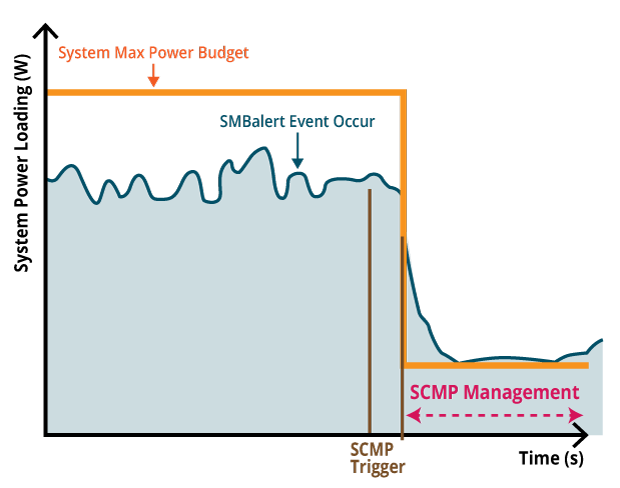
Hardware Security
Hardware-level Root of Trust *
Protection is built in the silicon to ensure systems will not be vulnerable to security attacks or cyber threats. This hardware-level root of trust (ROT) helps isolate the system as the boot process starts to make sure a verified code is used.
Provides:
- Integrity of cryptographic keys and secure key generation
- Boot process protected and verified
- Secure application environment and protection at runtime
* Available on select models

Optional TPM 2.0 Module
For hardware-based authentication, the passwords, encryption keys, and digital certificates are stored in a TPM module to prevent unwanted users from gaining access to your data. GIGABYTE TPM modules come in either a Serial Peripheral Interface (SPI) or low pin count (LPC) interface.

User Friendly
OCP 3.0 Ready
GIGABYTE offers servers that feature an onboard OCP 3.0 slot for the next generation of add on cards. Advantages of this new type include:
- Easy Serviceability:
Simply slot in or pull out the card, without opening the server or using tools - Improved thermal design:
Horizontal position and optimal heat sink design allow for air cooling to eliminate the heat efficiently
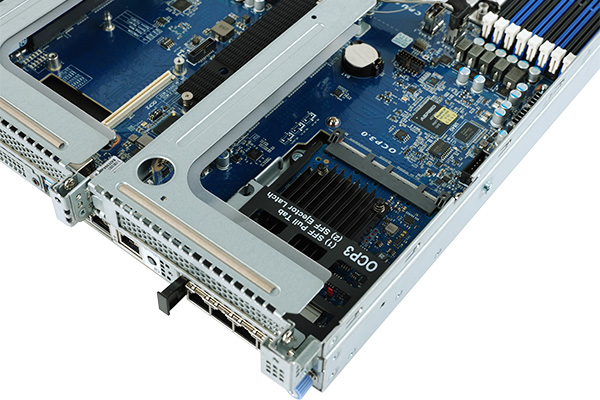
Certified Ready with Software Partners
Being a member of key software alliance partner programs enables GIGABYTE to rapidly develop and validate joint solutions, enabling our customers to modernize their data centers and implement IT infrastructure and application services with speed, agility, and cost optimization.
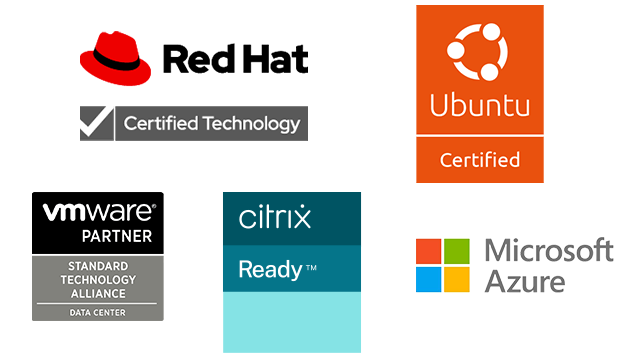
Chassis Management Controller (CMC)
GIGABYTE H-Series servers feature CMC* for chassis-level management and multi-node monitoring by connecting nodes internally via BMC integrated on each node to the CMC. This results in easier managment as there are less cables and network switch connections needed.
* IPMI only, no iKVM functionality
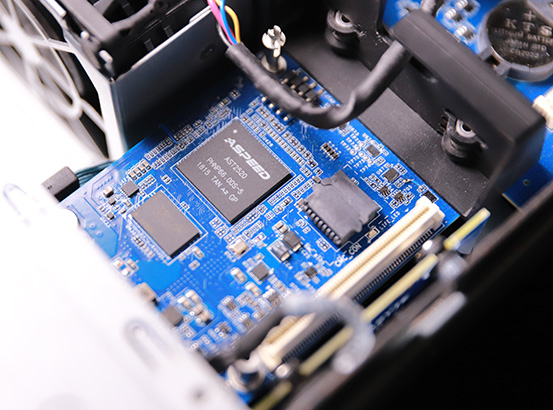
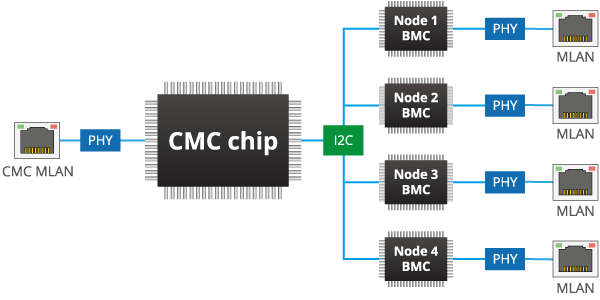
Ring Topology Management
GIGABYTE H-Series servers feature the ability to create a “ring” connection for monitoring & management of all servers in a rack for greater cost savings and management efficiency.
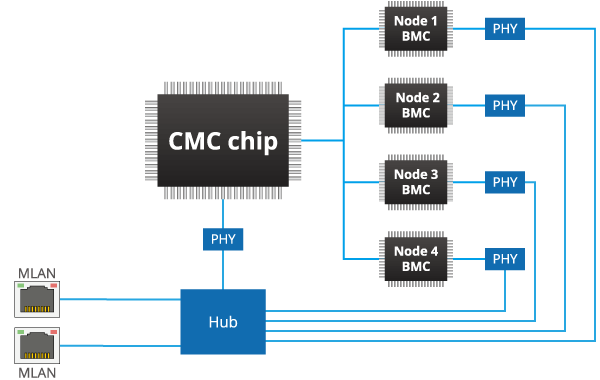
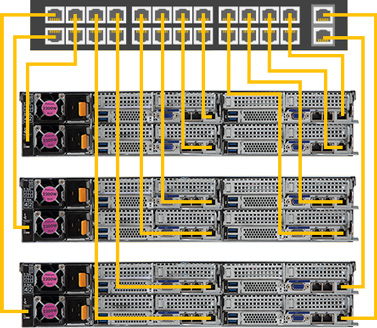 Typical Network Topology
Typical Network Topology Using CMC & Ring Topology Kit
Using CMC & Ring Topology KitValue-added Management
GIGABYTE offers free-of-charge management applications via a specialized small processor built on the server.
GIGABYTE Management Console
For management and maintenance of a server or a small cluster, users can use the GIGABYTE Management Console, which is pre-installed on each server. Once the servers are running, IT staff can perform real-time health monitoring and management on each server through the browser-based graphical user interface. In addition, the GIGABYTE Management Console also provides:
- Support for standard IPMI specifications that allows users to integrate services into a single platform through an open interface
- Automatic event recording, which can record system behavior 30 seconds before an event occurs, making it easier to determine subsequent actions
- Integrate SAS/SATA/NVMe devices and RAID controller firmware into GIGABYTE Management Console to monitor and control Broadcom® MegaRAID adapters.

GIGABYTE Server Management (GSM)
GSM is a software suite that can manage clusters of servers simultaneously over the internet. GSM can be run on all GIGABYTE servers and has support for Windows and Linux. GSM can be downloaded from GIGABYTE website and complies with IPMI and Redfish standards. GSM includes a complete range of system management functions that includes the following utilities:
- GSM Server: A software program that provides real-time, remote control using a graphical user interface through an administrator’s computer or through a server in the cluster. The software allows ease of maintenance for large clusters of servers.
- GSM CLI: A command-line interface for monitoring and managing remotely.
- GSM Agent: A software program installed on each GIGABYTE server node that retrieves information from each system and devices through the OS, and this software integrates with GSM Server or GSM CLI.
- GSM Mobile: A mobile app for both Android and iOS that provides admins with real-time system information.
- GSM Plugin: An application program interface that allows users to use VMware vCenter for real-time monitoring and management of server clusters.

